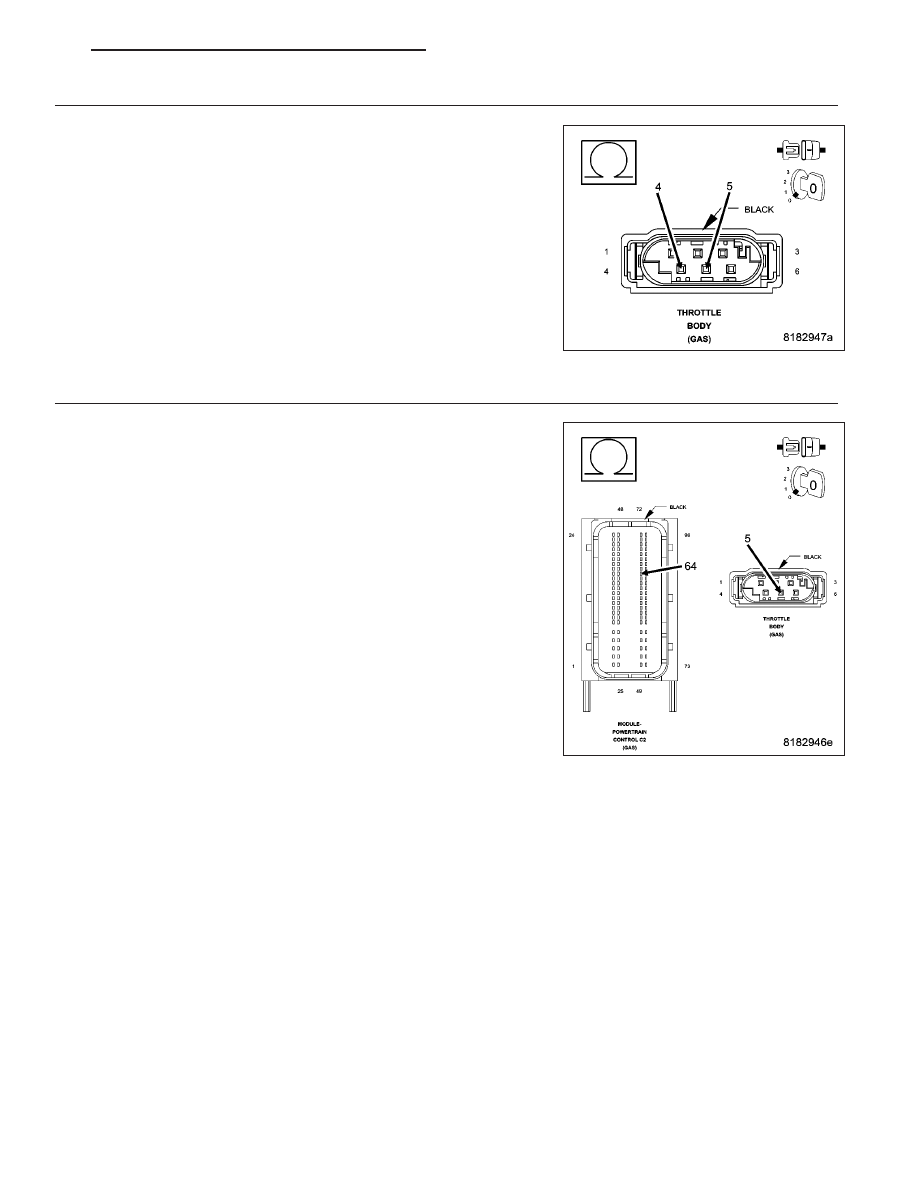Dodge Caliber. Manual - part 709

6.
(K22) TP SIGNAL 1 CIRCUIT SHORTED TO THE (K126) ETC MOTOR (-) CIRCUIT
Measure the resistance between the (K22) TP Signal 1 circuit and the
(K126) ETC Motor (-) in the Throttle Body harness connector.
Is the resistance below 100 ohms?
Yes
>> Repair the (K22) TP Signal 1 circuit for a short to the
(K126) ETC Motor (-) circuit.
Perform the PCM Verification Test Ver. 1 (Refer to 9 -
ENGINE - DIAGNOSIS AND TESTING).
No
>> Go to 7
7.
(K22) TP SIGNAL 1 CIRCUIT OPEN OR HIGH RESISTANCE
Turn the ignition off.
Measure the resistance of the (K22) TP Signal 1 between the Throttle
Body harness connector and the Powertrain Control Module (PCM) har-
ness connector.
Is the resistance below 5.0 ohms?
Yes
>> Go to 8
No
>> Repair the (K22) TP Signal 1 for an open circuit or high
resistance.
Perform the PCM Verification Test Ver. 1 (Refer to 9 -
ENGINE - DIAGNOSIS AND TESTING).
PM
ENGINE ELECTRICAL DIAGNOSTICS - GPEC
9 - 123